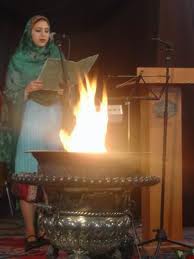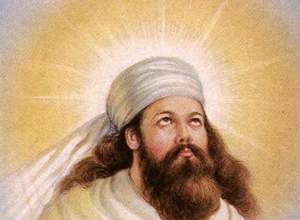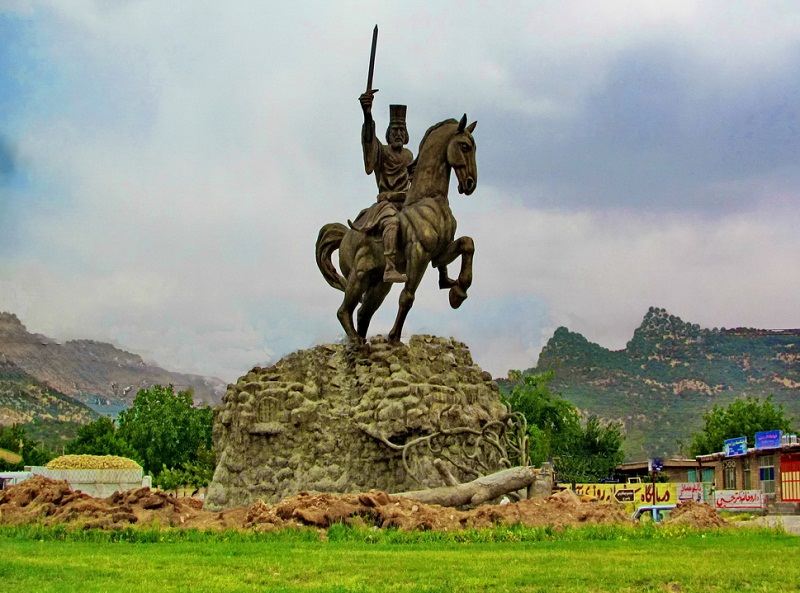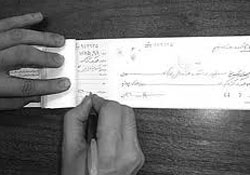Fire in Iran and the Achaemenid era
In addition to its religious role in ancient Iran, fire has also had other uses
The religious role of fire in ancient Iran has the largest share of the roles of this seventh creature of Ahura Mazda in religious and historical texts and is known more than its other functions, but fire also had other uses in that era..
In the Achaemenid period, fire also had a communication function and was used like a wireless telegraph. by order of Achaemenid Khashoggi (485 – 465 BC)From Shushtar and Hamedan, the two big capitals built very high towers at certain distances to the ends of Iran and they placed guards on top of them so that at night with the help of flames and special movements and signs they gave them, from this tower To the other tower, the most important events of the farthest borders of the country are sent to the centers. In the year 479 BC, when the Iranian lieutenant general conquered Athens, the capital of Greece, on the same night, the news reached the emperor that he was staying in Sard, the capital of Lydia.. In the Shahnameh and in the Zariran monument, it is also mentioned that by setting fire on top of the high mountains, they informed the troops to assemble and prepare to move..
This method may have been used in later periods as well. For example, there is a mountain in Isfahan near the Jinban minaret, and there are remains of a fire place on top of it, which experts think, considering the remains of the ramparts around it, may have been a place for watching and signaling for fire.. In Shiraz, there is a mountain near the Koran Gate, and on top of it, there is a place that is known today as "Dev's Oven" and in the past it was probably called "Did's Oven". This place also had a similar use..
Fire, an element for celebration and prayer
Of course, the role of fire in religion and communication was not limited and many rituals, prayers and celebrations were held for it and it took place in people's culture.. Ever since it was known, fire has always been the focus and respect of people. Among Iranians, this life-giving element has always been honored to the point where they named a god Azar / They called him fire and called the ninth day of every month and the ninth month of the year with his name. They held many celebrations in honor of this element, which is one of them: Jishn Sadeh and Jishn Syrian (Wednesday night) and Azar Jashn. Azar day, from the month of Azar, known as "Azergan" Azar, was a celebration of the day and month having the same name.. There is also a special prayer for fire in a part of Avesta. This attention and respect was up to the point that places of worship around the holy fire called fire temple were built for believers to gather and pray in different parts of this land..
Fire temple in ancient Iran
In Avesta, there is no term for fire temple. The first mention of fire (Known and specific) It is in Zoroastrian literature from the 3rd century AD, in an inscription of Shahpur I of Sassanid and his great contemporary, Kriter.. The creator of Bahram Fire, the most sacred and important ritual fire of Zoroastrian religion, was the founder.
From the Sassanid era, we find the name of three famous fire temples, whose origins are believed to be mythological fires.. The most important fire temple in Iran at that time was Azar Farnbagh fire temple (Adur Farrobag) It was in Fars that Atashkdeh was reserved for the clergy and was central. Azar Gashansab fire temple was a special fire temple of the military class, which was after Azar Farnbagh in terms of importance, and its location is in Shiz, near Ganzak, in the southeast of Lake Urmia. (in Azerbaijan) and the king and the soldiers used to go there to pray. The third most important fire temple in the country, Azar Barzin Mehr (Adur Burzenmihr) It was for farmers who went there in special rituals.
Archaeologists found that most of the fire temples were in Azerbaijan and this land was the holy religious center of Iran.. Most of these fire temples did not have ashes and were "self-burning" in Pahlavi terms. Apparently, the source of fuel for their fires was oil gas.
The name of Azerbaijan itself is derived from fire. Autopath (= Keeper of fire) who was the mayor of this area during the Achaemenid period, gave his name to it, and this area was called Aturpatkan. (Azerbaijan today) he became famous.
Also, a large number of buildings known as "Chartaq" were probably fire temples. We can see the traces of these buildings in the architecture of Iran after Islam. In ancient times, not only Zoroastrians went to the fire temple to pray and pray in front of the fire or to hear the speech of "Hirbad", but also the hungry and thirsty people went to the fire temple to ask for help. They took shelter.
In these temples, which were built in this country based on evidence from the Achaemenid period, the sacred fire was always burning with wood burning in a hearth on a high base.. The spiritual nurse of the fire burned and offered incense at a certain time every day along with prayer and fire. Since the Zoroastrians Qiblah is light, the believers to perform their daily prayers in the presence of fire or sunlight. (heavenly fire) They were in need and the condition for praying was complete purity and ablution. The special fire prayer is still recited in fire temples.
With the establishment of fire temples, the need for the emergence of a new class of priests, i.e. fire temple priests, was felt.. Among this class, a high-ranking priest or the head priest of the fire temple was called baginapati in ancient Persian.. In the Sassanid period, this title was called "Mughobed". (= Big Mughan) changed.
Fire pit in ancient Iran
The container in which the fire was kept was called "Ashdan".. The fire pit was located in an inner room like an altar in the fire temple so that the spiritual nurse would protect it from any pollution and impurity.. Among the remains of the magnificent palaces of Pasargad, well-carved white stone fireplaces have been found, which shows the importance of this element for the Achaemenid kings.. These fire pits have a bottom column and a series of three steps, which are connected to each other with a long base in the shape of a pencil-rectangular cube.. Its height reaches about the waist of a medium-sized person. Their head, which is on a stone base, was in the hollow and the place where the fire was lit. Maybe they used a metal brazier inside this stone hearth. Because there is no sign of fire inside it.
Pasargad fire pits are unique in terms of the elegance of stonework, but Zoroastrians have used its examples during centuries during worship and prayer..
In the carvings above Dariush's tomb, there is a fire pit like the Pasargad fire pit in front of Naqsh Shah, which shows the Zoroastrian nature of the scene.. The pattern of fire is like a pyramid of flames from the top of the hearth. This is the oldest example of a fireplace whose fire is lit. It is believed that praying to a fire on a high ground was one of the special rituals of Zoroastrian kings. It is as if Dariush wanted to emphasize his Zoroastrianism with these sculptures. Probably, the meaning of carved fire was the display of his personal hearth while sitting on the throne. A ceremony that apparently was founded by Cyrus and tells about the importance that in ancient times, the personal fire of every ruler had for his people and clan..
On the top of the fireplace is the image of Forohar in flight. Behind the head of the above figure, a prominent fish disk with a crescent on its lower edge is carved. The coordination of the motifs of Forohar, the moon disk and the fire pit in Dariush's tomb indicates Dariush's respect for the sun, moon and fire, and interestingly, three important Zoroastrian prayers are also dedicated to these three.: Pray the sun, pray the moon and pray the fire. In the Pahlavi texts, it is stated that the praise of God should be done while facing the sun, moon, and fire..
With these interpretations and according to the traditions of Zoroastrian religion, it can be said that these motifs show the king praying..
We can also see the Atshaddan motif on a number of flower seals that were found in the ruins of the treasury and the ramparts of Takht Jamshid.. In the motifs of these flower seals, it is located on top of the Forohar fire pit and on both sides of it, two worshipers or two worshipers are engaged in prayer..
The details of the shape of the hearth on the flowers are not exactly clear, but it must be an example of the hearths of the Achaemenid period.. In Mehri flower which was obtained from Egypt and its date is between the years 400 until the 500 BC, the same example of the hearth can be seen. In general, the image of a burning fire on a high pedestal, on the seals and flowers of the Achaemenid seals that worshipers pay respect to, had become an official religious symbol.. It is narrated from Xenophon, the Greek historian, that the great Achaemenid Cyrus prayed to the god of fire and Ahura Mazda when he left his hometown of Pars.. Xenophon portrays Cyrus as a faithful Zoroastrian and usually prays to Ahura Mazda..
Before the time of the Sassanids, no name has been left for these fireplaces. But in the Sasanian period, we find the names "Adoran", "Ashdan" and "Ashgah".. Also, during the Sassanid period, Atshaddan became a national symbol and it was minted on the coins of the kings of this dynasty.
The importance of fire can be seen in compound common names left over from the Achaemenid period, such as: Ater Ferne (= blessed by fire) And in Elamite tablets: Saturday left (= protected by fire)Ater Banu (= holder of the glow of fire) and seed essence (= set fire).








Greetings and courtesy, this text, which is attributed to Hazrat Zoroaster Ali Nabina and his family and peace be upon him, is very worthy of consideration. It can be challenged in several ways, but in another way, the same content is mentioned in the narrations of the end of time that are narrated from the Imams of the Infallible. You can clearly see in them, but I think it is very necessary to mention one thing: the attack of the Arabs on Iran has nothing to do with the Holy Prophet Muhammad, peace and blessings of God be upon him, and in fact those who attacked Iran before attacking Iran They attacked the Holy Prophet and martyred him (they poison)After him, their daughter was martyred, and then they deprived Amir al-Mu'minin Ali bin Abi Talib of his obvious right, and then they attacked the holy land of Iran; people attacked and invaded this land who did not have the least resemblance to the Holy Prophet; rather, they were his enemies. If you study the history carefully, you will find that Amir al-Mu'minin Ali bin Abi Talib did not participate in any of the Arab attacks on other lands. As a result, it can be said that those who attacked Iran had nothing to do with the Holy Prophet. Let me repeat the point that if you see the hadiths of Imams Athar regarding the end of time, they are very similar to this text.
The amazing story of fire is that fire was used nearly six hundred thousand years ago, and because they did not have matches in the modern form, they had to keep the fire burning in a place like fireplaces or borrow burning coal from the neighbors.. Like a phenomenon whose worship is inappropriate, because the shrines needed light and heat in any case, and therefore the fire becomes the later and not the earlier factor, and then in the later periods, the fire of the temple was used for the holy fire, and again, the unique power of the fire that in First, he has been represented as a part of the celestial lightning and has become a deity of the forces of nature. Zoroaster did not say anything about the worship of fire, only about the role of fire as a revealing and even threatening role, and the prayer of Ahurai fire is related to Zoroastrian Pishaz ritual, like Hum, which Zoroaster spoke against, but now it is a ritual of a shrine..